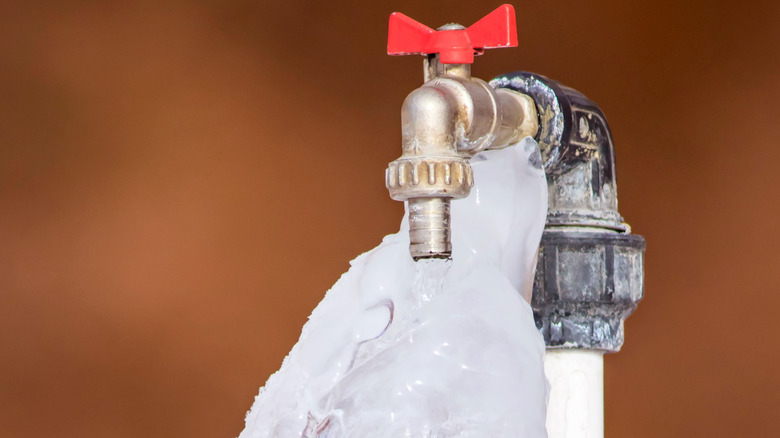Crucial Tips for Preventing Frozen Plumbing in Winter Conditions
Crucial Tips for Preventing Frozen Plumbing in Winter Conditions
Blog Article
How do you really feel in relation to How to prepare your home plumbing for winter weather?

Cold weather can damage your plumbing, particularly by freezing pipelines. Right here's exactly how to prevent it from taking place and what to do if it does.
Introduction
As temperature levels decline, the risk of icy pipes rises, potentially leading to costly repairs and water damages. Understanding how to stop frozen pipes is essential for property owners in cool climates.
Prevention Tips
Protecting prone pipes
Cover pipes in insulation sleeves or make use of heat tape to safeguard them from freezing temperatures. Concentrate on pipes in unheated or external areas of the home.
Heating strategies
Maintain indoor spaces effectively heated, specifically locations with pipes. Open cupboard doors to allow warm air to flow around pipelines under sinks.
Just how to determine frozen pipes
Try to find decreased water circulation from taps, uncommon odors or sounds from pipes, and visible frost on subjected pipelines.
Long-Term Solutions
Architectural modifications
Think about rerouting pipes away from exterior wall surfaces or unheated locations. Include extra insulation to attic rooms, cellars, and crawl spaces.
Upgrading insulation
Buy top quality insulation for pipes, attics, and walls. Appropriate insulation helps maintain consistent temperatures and lowers the risk of frozen pipes.
Safeguarding Outside Pipes
Yard hose pipes and outdoor faucets
Disconnect and drain pipes yard tubes before winter season. Mount frost-proof spigots or cover outside faucets with shielded caps.
Recognizing Icy Pipes
What creates pipes to ice up?
Pipes freeze when revealed to temperature levels below 32 ° F (0 ° C) for prolonged durations. As water inside the pipelines freezes, it increases, putting pressure on the pipe wall surfaces and possibly creating them to rupture.
Risks and problems
Icy pipes can cause supply of water disruptions, residential or commercial property damages, and costly repair services. Burst pipelines can flood homes and cause considerable architectural damage.
Indicators of Frozen Piping
Recognizing frozen pipelines early can stop them from rupturing.
What to Do If Your Pipes Freeze
Immediate activities to take
If you think frozen pipes, keep taps open to eliminate pressure as the ice melts. Use a hairdryer or towels soaked in warm water to thaw pipelines slowly.
Final thought
Avoiding frozen pipelines calls for proactive procedures and quick feedbacks. By recognizing the causes, signs, and safety nets, homeowners can secure their plumbing throughout cold weather.
5 Ways to Prevent Frozen Pipes
Drain Outdoor Faucets and Disconnect Hoses
First, close the shut-off valve that controls the flow of water in the pipe to your outdoor faucet. Then, head outside to disconnect and drain your hose and open the outdoor faucet to allow the water to completely drain out of the line. Turn off the faucet when done. Finally, head back to the shut-off valve and drain the remaining water inside the pipe into a bucket or container. Additionally, if you have a home irrigation system, you should consider hiring an expert to clear the system of water each year.
Insulate Pipes
One of the best and most cost-effective methods for preventing frozen water pipes is to wrap your pipes with insulation. This is especially important for areas in your home that aren’t exposed to heat, such as an attic. We suggest using foam sleeves, which can typically be found at your local hardware store.
Keep Heat Running at 65
Your pipes are located inside your walls, and the temperature there is much colder than the rest of the house. To prevent your pipes from freezing, The Insurance Information Institute suggests that you keep your home heated to at least 65 degrees, even when traveling. You may want to invest in smart devices that can keep an eye on the temperature in your home while you’re away.
Leave Water Dripping
Moving water — even a small trickle — can prevent ice from forming inside your pipes. When freezing temps are imminent, start a drip of water from all faucets that serve exposed pipes. Leaving a few faucets running will also help relieve pressure inside the pipes and help prevent a rupture if the water inside freezes.
Open Cupboard Doors
Warm your kitchen and bathroom pipes by opening cupboards and vanities. You should also leave your interior doors ajar to help warm air circulate evenly throughout your home.

I recently found that blog posting about How to prepare your home plumbing for winter weather when looking around the internet. Enjoyed our blog entry? Please share it. Help another person locate it. Thanks for your time spent reading it.
Get A Free Quote Report this page